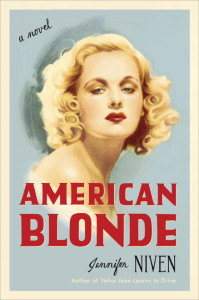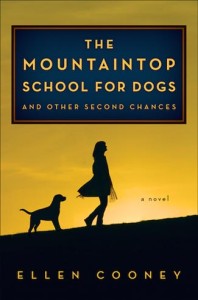 Enchanted Prose is a blog about beautiful fiction – mostly. From time to time, a memoir grabs me. The two previously reviewed here (Under Magnolia and Act One) felt like fiction. The Ogallala Road does not. But the author’s sense-of-place is palpable, and the environmental message too real to ignore.
Enchanted Prose is a blog about beautiful fiction – mostly. From time to time, a memoir grabs me. The two previously reviewed here (Under Magnolia and Act One) felt like fiction. The Ogallala Road does not. But the author’s sense-of-place is palpable, and the environmental message too real to ignore.
High Plains “Zealot” and Water Conservationist (Western Kansas, present-day): Statistics don’t feel personal. So if you read in a newspaper a Kansas study concluded that a vast underground reservoir of water spanning eight states – The High Plains Ogallala Aquifer – will run dry in 50 years would it register? Maybe, in passing. When Julene Bair tells a similar story, it not only registers, it sinks in. For her memoir is a wake-up call about the “largest, single water-management issue concern in the U.S.”
The Ogallala Aquifer is among the largest in the world. It flows under sections of Wyoming, South Dakota, Nebraska, Texas, Colorado, New Mexico, Oklahoma, and Kansas, where Julene Bair grew up on a farm in the far western part of the state. Her town, Goodland, the biggest east of Denver, is “dying despite irrigation, and, to some extent, because of it.” Seems the only thing “farming hadn’t messed up” might be the sky.
This forewarning is even more convincing when you realize Bair does not see the glass as half empty. She’s the “family idealist,” who believes in the goodness of people to “do right even if it meant going against their own self-interest.” She’s also someone who has not taken the easy road.
For a transformative period in her life, after her divorce, she lived with her young son, Jake, in a “rock house” in the Mojave Desert, on what was then Bureau of Land Management (BLM) lands. Single parenting, remotely, in a desert, is an impressive undertaking, even for someone “yearning for wild land.” There, she “discovered the West of my imagination” and a sacred respect for the life-force of water, the “world’s purest element in its purest form.” So, when Bair says the average American uses “80 to 100 gallons of water a day” but she made do with only 500 gallons a month, she earns our respect. Bair, unlike many of us, does not take water for granted. When she describes modern agricultural practices advanced by government farm subsidies as “cowboying weeds into submission and magnificently boosting our yields, [but] they were also leaching into our groundwater and into our bloodstreams,” her call to arms about chemicals sounds like Rachel Carson’s alarms in Silent Spring.
It’s one thing to write about wilderness eloquently, fictionally, but when you’ve lived it and sacrificed for it, well, it takes on a whole other authentic meaning. And Bair’s lyricism is for uncommon elements, like buffalo grass, blue gamma grass – “low growing grass stitched itself over the ground like a wooly tapestry.” It’s marvelous that she finds the smell of grasses “intoxicating, restorative,” for it helps to balance her woeful tales of farmland and water exhaustion.
While we might not fully grasp the science of water tables, irrigation and agricultural systems, especially in a remote region of the country we may not know, we certainly can understand that more water is being used up than sustained. If depleted it would take 5,000 years to replenish! The Ogallala Aquifer is supposed to be “the hope and promise at the center of the nation,” Bair laments. And yet, from this source a single farm – Bair’s – pumped 200 million gallons of water in a farming season. Sounds like a lot, but Bair says not so. All this irrigation has depleted the water table. The water may run underground, invisible, but Bair can see the “land was flatter now, and the grass had vanished. The earth had been human stitched into a patchwork of monotones – squares and circles of bare dirt, corn stubble, and winter wheat.”
Another area of western Kansas beautifully described – it brings a “tenderness in me because it was in danger” – is the Smoky Valley, a “paradise of unfarmed hills sloping down into cottonwood groves along the river.” Bair got close to it as the home of a rancher named Ward, a serious boyfriend for much of the memoir. Their relationship didn’t endure because he’s a “settler” and she’s a “seeker.” They met when Bair had returned to her Kansas farm from Laramie, Wyoming, where she’d been living for eight years with her son, Jake. An “exploring spirit,” on this day she was inspecting the “sandy beds of dry creeks.” Water issues have troubled her for quite some time.
While Bair writes candidly about the “deliciousness of desire” in mid-life after so many years of single motherhood, it’s her romance with the “kind of low-key vista that could thrill only a native Kansan whose eye had not been jaded by mountains or the sensational” that’s most delicious.
Of course, this is a memoir, so it’s peopled with Bair’s “atypical family” (older members are liberals; younger ones tattooed). Looming largest is her father, who farmed her grandparents’ land. Bair watched the progression from “intense labor that broke men’s and women’s backs to intense pillage and poison that broke the earth’s.” But her father, a rock as hard as her rock house, her “underlayment,” never gave the land up. That’s his rallying cry: “Hang on to your land!” The motto hangs over the author’s head and her brother, Bruce’s, who takes over the farm after their indomitable father dies. While the heart-wrenching decision of “what to do with the farm” causes much angst, interestingly, the author’s mother concedes whatever decision her son makes, giving us insight into the “stoicism” of Kansans.
For Bair, it’s important to distinguish what losing the land means. Her father cherished it for the real estate value; Bair’s is an emotional connection. She’s convinced, and convincing, that “our sense of beauty is a survival instinct.”
During Julene Bair’s early desert years, she coped with great loneliness by writing in “countless spiral notebooks that she filled by kerosene lantern light.” Presumably she kept this pattern up, which enabled her to reflect vividly on those and later years, reliving her passions, hopes, regrets, and concerns.
Together, The Ogallala Road is a blend of heavyheartedness and optimism. Bair is buoyed by “wilderness on my skin” – a “plains palette” that makes her feel “on top of the world.” On the other hand, the once 30 million farms in the country have dwindled to less than 2 million. Since most are now large-scale (farmers had to “get big or get out”), they’re still causing plenty of damage to our water: “farming accounts for 70% of contamination of rivers and streams.” All this data sobering when put forth personally.
The author seeks to contribute to a cause she cares passionately about. Her evocative prose – if widely read – is a step in that direction.
Lorraine



